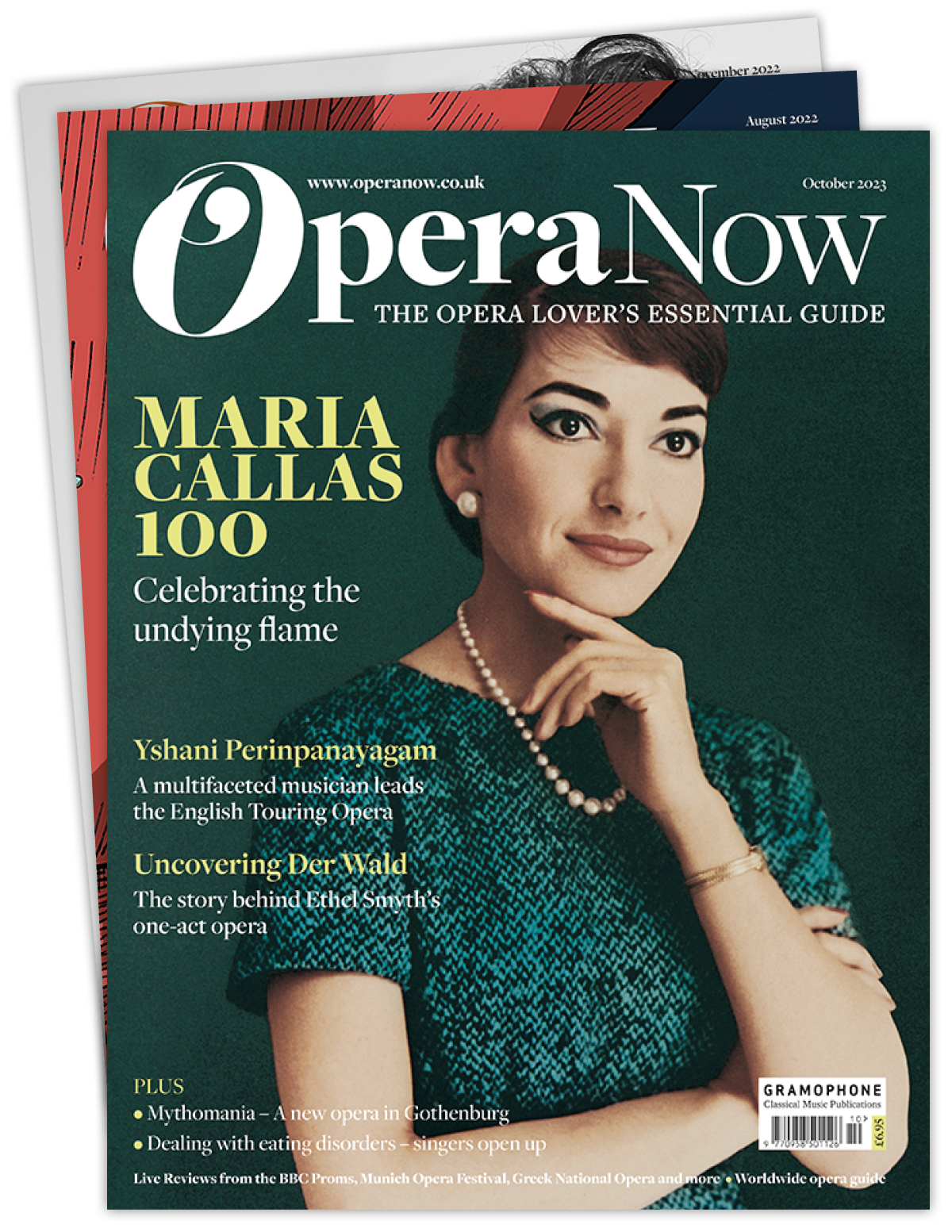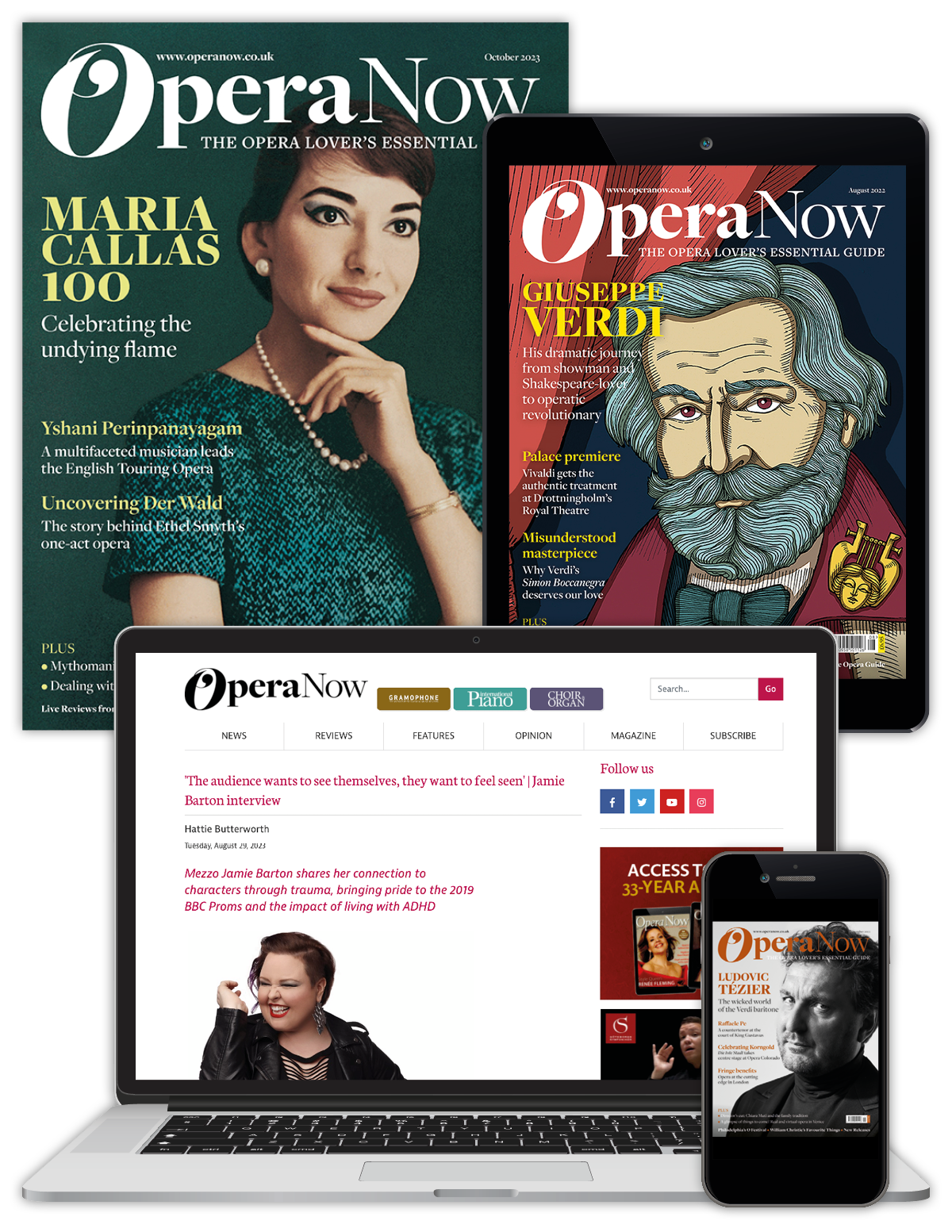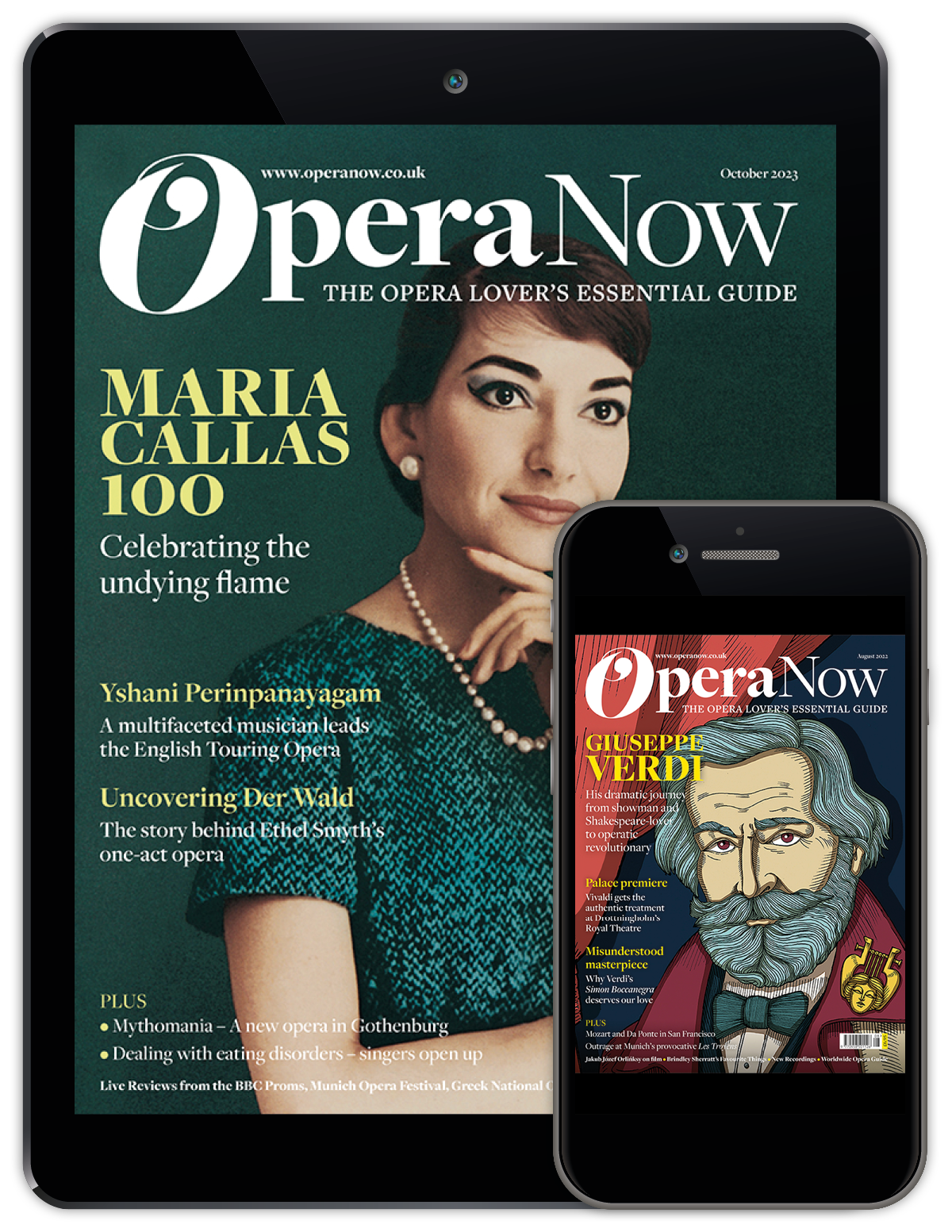Preview | Pénélope
Mark Pullinger
Thursday, April 24, 2025
As the Bayerische Staatsoper prepares to stage Gabriel Fauré’s Pénélope, we explore the history of the work with director Andrea Breth and conductor Susanna Mälkki
 The original poster of Fauré’s Pénélope by Georges Antoine Rochegrosse
The original poster of Fauré’s Pénélope by Georges Antoine Rochegrosse
The generously moustachioed Gabriel Fauré featuring in the august pages of Opera Now may seem like an imposter. Highly regarded for his songs and chamber music – and the most consoling of Requiems – Fauré is not exactly renowned for his operatic output, which totals a single work. Inspired by the final pages of Homer’s Odyssey, Fauré’s Pénélope is a true operatic rarity. However, 100 years after the composer’s death, the Bayerische Staatsoper (Bavarian State Opera) is putting that right this summer with its first ever staging.
It is being directed by Andrea Breth, a regular at Staatsoper Berlin and Festival d’Aix-en-Provence. I begin by asking her why she thinks the opera is so rarely performed. ‘Fauré is especially known as a composer of art songs,’ she responds, ‘and not as a composer of opera. None of the attempts to compose opera in France at the beginning of the 20th century were really successful, although Debussy’s Pélléas et Mélisande is maybe the one big exception. French style and French taste were quite special and different from what opera was in the rest of Europe where it was popular (Italy and Germany). Also, Penelope as a character was not the sort of dramatic woman or femme fatale who people wanted to see on the operatic stage then.’
Pénélope tells the same Homeric story as Monteverdi’s Il ritorno di Ulisse in patria (1640).
The faithful Pénélope has waited 20 years for her husband, Ulysse (Odysseus), to return from the Trojan Wars, keeping suitors at bay in the meantime. She protests that she cannot marry any of them until she has finished making a shroud for her father-in-law, Laertes. She sews by day, but unpicks her work by night. The suitors see through her ruse, demanding that she marries one of them the next day. Pénélope declares that she will only marry a man who can draw Ulysse’s mighty bow – a task none of them can achieve. But Ulysse, disguised as a vagabond, has returned to Ithaca; he seizes the bow and shoots his rivals dead.
Breth explains what attracted her to direct Fauré’s opera. ‘It is a piece that concentrates on a woman who usually gets forgotten by writers or composers because she almost disappears behind the figure of Ulysses who features in so many literary forms and shapes, from Homer’s long epic poems to modern adaptations or poems. I am interested in the change of focus where this opera presents us with an alternative perspective on a very famous story!’
Fauré was at the peak of his powers when he composed Pénélope. He had written stage music for plays by Dumas, Shakespeare and even Maeterlinck’s Pelléas et Mélisande, and had also composed Prométhée, a three-act tragédie lyrique (grand cantata) based on the opening of the Greek tragedy of Prometheus Bound. But Pénélope, a portrait of marital love and devotion, was his first – and only – true opera.
It was in 1907 that Fauré met Wagnerian soprano Lucienne Bréval in Monte-Carlo. She expressed surprise that he had never written an opera before. When Fauré replied that he had never found the right libretto – and that he was most interested in subjects from antiquity – Bréval mentioned a young friend, René Fauchois, who had just written a Pénélope libretto with her in mind! Fauchois duly proposed a five-act opera, but Fauré pleaded that he was old and that his directorship of the Paris Conservatoire meant he had little time to compose, so they cut the character of Telemachus and trimmed the action to three acts.
Fauré was so fired up that he began composing in April 1907, before he had even received the full libretto. The opera had a long gestation, mainly because Fauré’s work at the Conservatoire meant he was only really able to devote himself to it during the summer months, when he retreated to the countryside to focus on composition. It took him some six years to write. Fauré labelled his score a poème lyrique and the searching central soprano role shows he was concerned above all with Penelope’s inner drama.
Is there a danger, I suggest to Breth, that – until the final scene – the opera can be quite static? Aaron Copland complained that it was ‘distinctly non-theatrical’, although Nadia Boulanger (Le Ménestrel, 15 March 1913) called it ‘one of the most noble, worthiest, and most moving’ scores there was.
This opera is very much about intimacy and also about how we look at history from a distance
‘We will have to see,’ Breth replies. ‘But anyway, I am much more interested in concentration rather than in action. This opera is very much about intimacy and also about how we look at history from a distance.’
The opera’s history is chequered. It was given just three performances in Monte-Carlo, but Paris was a different story – a triumph at the Théâtre des Champs-Élysées on 10 May 1913. But later that same month – in the very same theatre – came Stravinsky’s ballet The Rite of Spring and Fauré’s Pénélope was soon forgotten.
The new production is being conducted by Susanna Mälkki. I ask her where the work sits in the world of early 20th-century French opera. ‘I think when Fauré heard Pelléas et Mélisande, his thoughts about opera evolved,’ she says.
‘I think you can hear in it this kind of Debussian world. It’s interesting because the opera is based on a story which is from antiquity, so it has this monumental element, but at the same time it just flows. It doesn’t have this traditional shape of opera in terms of arias and ensembles.’
Fauré was a master songwriter and one could argue there is a good deal more singing in Pénélope than in Pelléas et Mélisande or Dukas’s Ariane et Barbe-Bleue. Although there are no real arias, there are ‘soaring flights of song’ linking seamlessly with his recitatives. The opera is written in a through-composed style which Fauré could have drawn from Wagner. We know that he visited Bayreuth to see Parsifal, and he also saw the Ring cycle in Munich. Is it possible to detect Wagnerian influences in Pénélope?
 Director Andrea Breth (left) and conductor Susanna Mälkki (right)
Director Andrea Breth (left) and conductor Susanna Mälkki (right)
‘Fauré doesn’t employ leitmotifs in the sense that Wagner used them because these are more like signatures or hints,’ says Mälkki, ‘but there are repeating motifs. I think the most Wagnerian elements are in the long progressions of music. Fauré has these sections which build up and develop, and these remind me of what Wagner does. He has this intensity of build-up, but it doesn’t grow into the really massive dimensions of Wagner. Fauré goes more in sequences.
‘On the other hand, there are moments which are connected to each other all over the piece. Fauré has these signature musical ideas which come back and then he develops them in parallel, but in different places in the opera. But it’s important to remember that Fauré was still a French composer, so there is a certain element of elusiveness in the score. He presents things and then they go away. It’s not as straightforward as Wagner would be, but he’s no less great in his musical imagination. Harmonically, he was just so original. Unorthodox, but still traditionalist somehow.’
We discuss Fauré’s late chamber music, which is quite remarkable in its daring. ‘He works on the limits of tonality,’ Mälkki suggests. ‘There’s always tonality going on, but it’s just not the kind of tonality you expect.’ ON
Pénélope opens at the Prinzregententheater, Munich, on 18th July staatsoper.de
This featured originally appeared in the Summer 2025 issue of Opera Now – Subscribe today!









